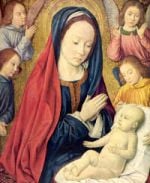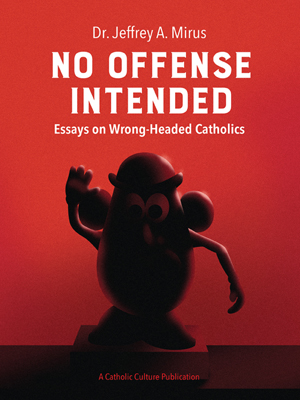The Promise of Tabor Is Fulfilled at Easter
1. In this Octave of Easter, which is considered one great day, the liturgy tirelessly repeats the message of the Resurrection: "Jesus is truly risen!". This proclamation opens a new horizon to all humanity. All that was mysteriously foreshadowed in the Transfiguration on Tabor becomes a reality in the Resurrection. At that time the Saviour revealed to Peter, James and John the miracle of glory and light sealed by the voice of the Father: "This is my beloved Son!" (Mk 9: 7).
On the feast of Easter these words appear to us in the fullness of their truth. The Father's beloved Son, Christ who was crucified and died, is raised for our sake. In his brightness we believers see the light and, "raised by the Spirit", as the liturgy of the Eastern Church says, "we praise the consubstantial Trinity for ever and ever" (Great Vespers of the Transfiguration of Christ). Our hearts filled with the joy of Easter, today we spiritually climb the holy mountain that dominates the plain of Galilee to contemplate the event that took place on its summit, in anticipation of the Easter events.
Liturgy emphasizes Trinitarian dimension of Transfiguration
2. Christ is the centre of the Transfiguration. Two witnesses of the Old Covenant appear with him: Moses, mediator of the law, and Elijah, a prophet of the living God. The divinity of Christ, proclaimed by the Father's voice, is also revealed by the symbols which Mark describes with picturesque touches. Indeed, there is light and whiteness, which represent eternity and transcendence: "His garments became glistening, intensely white, as no fuller on earth could bleach them" (Mk 9: 3). Then there is the cloud, a sign of God's presence during Israel's Exodus and over the tent of the Covenant (cf. Ex 13: 21-22; 14: 19, 24; 40: 34, 38).
At Matins for the Transfiguration the Eastern liturgy again sings: "Immutable brightness of the Father's light, O Word, in your shining light on Tabor we have seen today the light that is the Father and the light that is the Spirit, a light that illumines all creation".
3. This liturgical text emphasizes the Trinitarian dimension of Christ's Transfiguration on the mountain. In fact, the Father's presence with his revealing voice is explicit. Christian tradition catches an implicit glimpse of the Holy Spirit's presence based on the parallel event of the Baptism in the Jordan, when the Spirit descended upon Christ like a dove (cf. Mk 1: 10). Indeed, the Father's command: "Listen to him" (Mk 9: 7) presupposes that Jesus was filled with the Holy Spirit so that his words would be "spirit and life" (Jn 6: 63; cf. 3: 34-35).
It is possible, then, to climb the mountain in order to pause, to contemplate and to be immersed in the mystery of God's light. Tabor represents all the mountains that lead us to God, according to an image dear to mystics. Another text of the Eastern Church invites us to make this ascent to the summit and the light: "Come, peoples, follow me! Let us climb the holy and heavenly mountain; let us spiritually pause in the city of the living God and contemplate in spirit the divinity of the Father and the Holy Spirit which is resplendent in the Only-begotten Son" (troparion at the conclusion of the Canon of St John Damascene).
4. In the Transfiguration we not only contemplate the mystery of God, passing from light to light (cf. Ps 36: 10), but we are also invited to listen to the divine word that is addressed to us. Above the word of the Law in Moses and of the prophecy in Elijah, the voice of the Father can be heard referring to the voice of the Son, as I have just mentioned. In presenting his "beloved Son", the Father adds the invitation to listen to him (cf. Mk 9: 7).
In commenting on the Transfiguration scene, the Second Letter of Peter emphasizes the divine voice. Jesus Christ "received honour and glory from God the Father and the voice was borne to him by the majestic glory: "This is my beloved Son, with whom I am well pleased'; we heard this voice borne from heaven, for we were with him on the holy mountain. And we have the prophetic word made more sure. You will do well to pay attention to this as to a lamp shining in a dark place, until the day dawns and the morning star rises in your hearts" (2 Pt 1: 17-19).
Let us bless the Father, the Word and the Holy Spirit
5. Seeing and hearing, contemplating and obeying are therefore the ways that lead us to the holy mountain on which the Trinity is revealed in the glory of the Son. "The Transfiguration gives us a forestaste of Christ's glorious coming, when he "will change our lowly body to be like his glorious body' (Phil 3: 21). But it also recalls that "it is through many persecutions that we must enter the kingdom of God' (Acts 14: 22)" (Catechism of the Catholic Church, n. 556).
The liturgy of the Transfiguration, as the spirituality of the Eastern Church suggests, presents a human "triad" in the three Apostles Peter, James and John, who contemplate the divine Trinity. Like the three young men in the fiery furnace of the Book of Daniel (3: 51: 90), the liturgy "blesses God, the Father and Creator, praises the Word who comes down to help them and changes the fire into dew, and exalts the Holy Spirit who gives life to all for ever" (Matins of the Feast of the Transfiguration).
Let us now pray to Christ transfigured in the words of the Canon of St John Damascene: "You have allured me with desire for you, O Christ, and have transformed me with your divine love. Burn away my sins with your spiritual fire and deign to fill me with your sweetness, so that leaping with joy I may exalt all your manifestations".
To the English-speaking pilgrims and visitors the Holy Father said:
I extend a special greeting to the newly ordained deacons from the Pontifical Irish College and the Pontifical Scots College: may God strengthen and guide you in your ministry of grace and hope. Upon all the English-speaking pilgrims and visitors, especially those from England, Scotland, Ireland, Malta, Indonesia, Japan and the United States of America, I invoke the joy and peace of the risen Saviour.
© L'Osservatore Romano, Editorial and Management Offices, Via del Pellegrino, 00120, Vatican City, Europe, Telephone 39/6/698.99.390.
This item 2769 digitally provided courtesy of CatholicCulture.org






